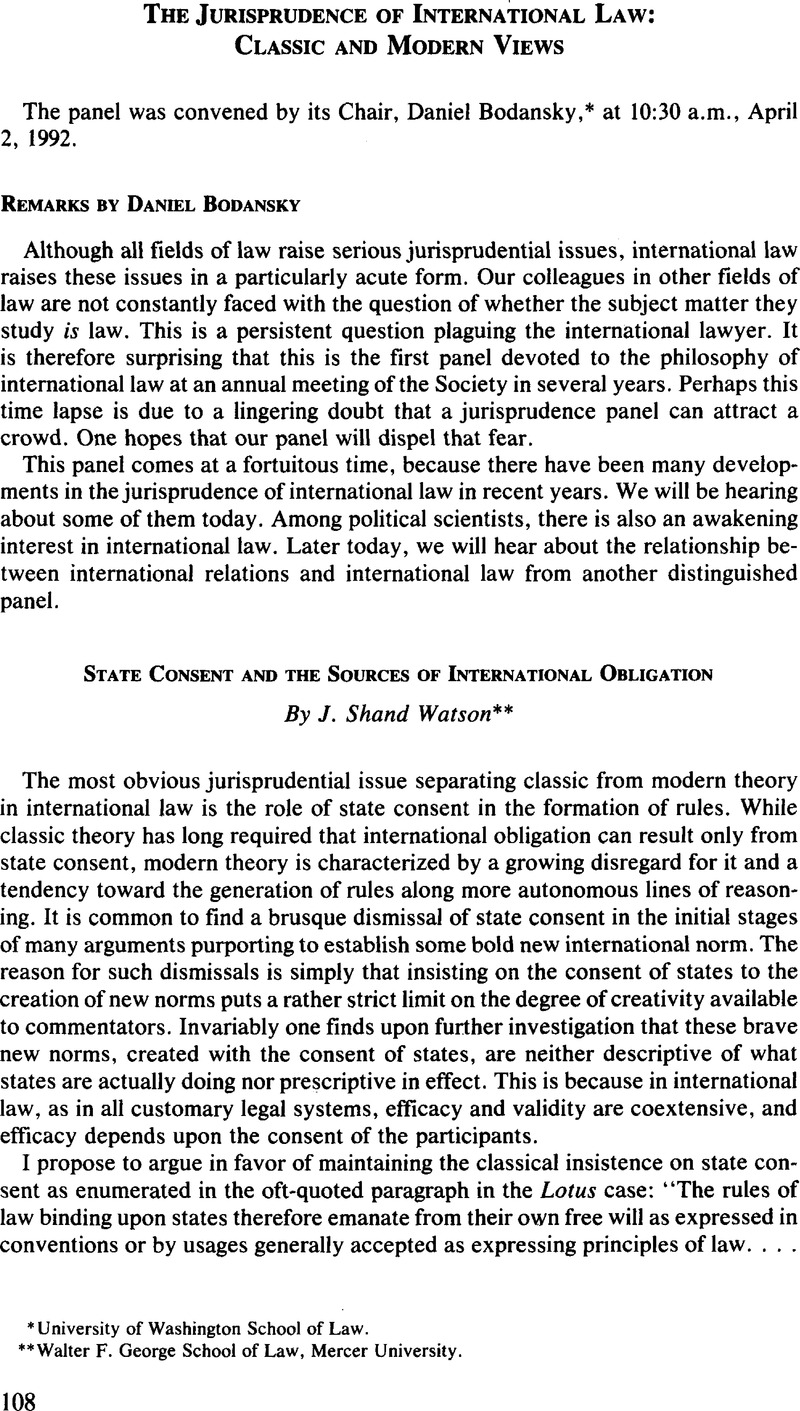Article contents
State Consent and the Sources of International Obligation
Published online by Cambridge University Press: 28 February 2017
Abstract

- Type
- The Jurisprudence of International Law: Classic and Modern Views
- Information
- Copyright
- Copyright © American Society of International Law 1988
References
1 The S.S. Lotus case, PCIJ Ser. A. No. 10, at 18 (1927). Brierly stated the matter even more succinctly: “Nothing can be law to which states have not consented.” J. Brierly, The Law of Nations 51 (6th ed. 1963).
2 P. Weil, Towards Relative Normativity in International Law?, 77 AJIL 413, 427 (1983).
3 Bin Cheng, United Nations Resolutions on Outerspace: “Instant” International Customary Law, 5 IND. J. INT-L L. 23 (1965).
4 Hans Kelsen, General Theory of Law and State 115-22 (1945).
5 H. L. A. Hart’s “Rule of Recognition,” while similar to Kelsen’s Grundnorm, is based on empirical evidence of acceptance by those within the legal system. See HART, CONCEPT OF LAW, chapter VI (1961).
6 That the external viewpoint alone is insufficient as a means of analyzing legal systems is made abundantly clear by HART, supra note 5, chapter V and ALF ROSS, On Law and Justice 13-18 (1959).
- 4
- Cited by




